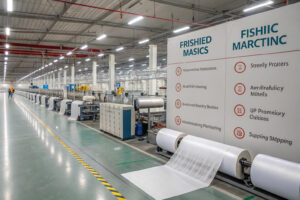When customers search for the best fabric masks, they often feel confused by so many choices. Polyester looks modern and durable, cotton feels soft and safe, while blends promise balance. But choosing wrongly can affect comfort, breathability, and even sales for business buyers. This challenge creates uncertainty and slows down decision-making.
The best way to decide between polyester, cotton, and blended fabrics is to understand how each material performs in terms of breathability, comfort, durability, and cost-effectiveness. Cotton offers softness and skin-friendliness, polyester provides strength and resistance, and blends combine the best of both.
If you are a buyer or entrepreneur, learning these key points helps you align your orders with your market. Each market segment values different aspects: parents want safe and breathable masks for children, sports users need quick-dry masks, and fashion buyers demand flexible customization. Let’s go deeper into these fabric choices to see which one works best for you.
Why Is Cotton the First Choice for Many Buyers?
Cotton is one of the oldest and most trusted fabrics in textiles. Buyers usually prefer cotton for its natural feel, high skin comfort, and hypoallergenic qualities. But what does that mean for your face covering orders?
Cotton is often the first choice because it is soft, breathable, and safe for sensitive skin, which makes it ideal for children and long-hour wear. It also carries a strong consumer perception of safety and trust.
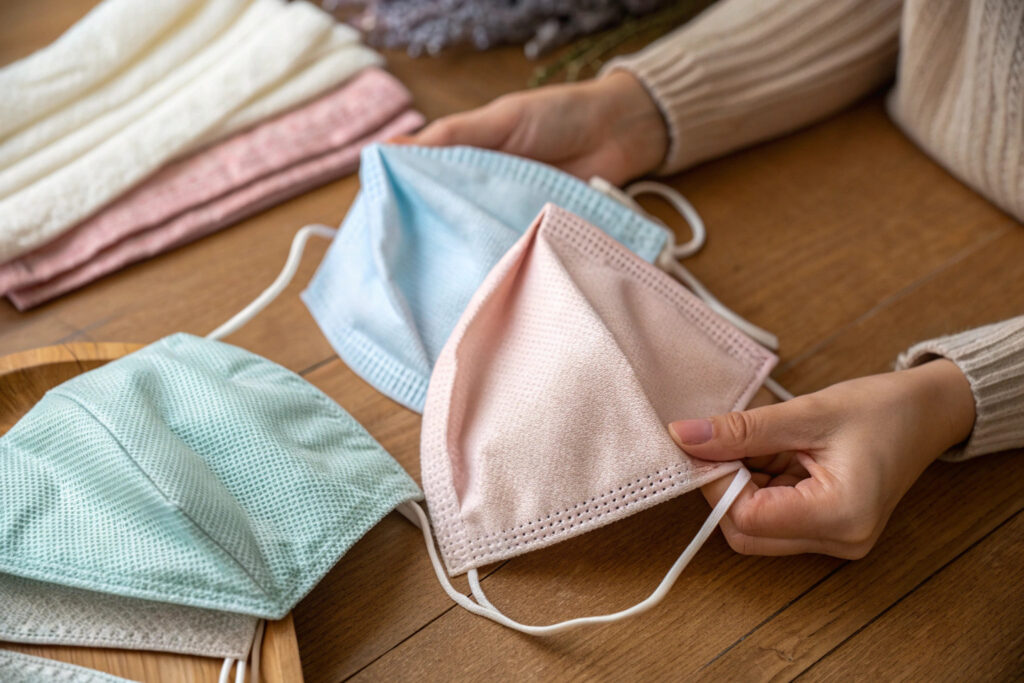
Is Cotton Always the Most Comfortable Option?
Cotton fabrics allow air to flow freely, making them breathable for daily wear. According to Cotton Incorporated, this natural fiber is also very soft and absorbs moisture effectively. However, cotton may shrink after multiple washes and takes longer to dry compared to synthetic fabrics. This makes it less suitable for high-performance needs, such as sports masks. Buyers who prioritize comfort and natural touch will always rank cotton higher than polyester, even if the price is a little higher.
Does Cotton Provide Enough Durability for Bulk Orders?
While cotton feels great, its durability is moderate. Heavy washing cycles or rough handling can wear it out faster than polyester. According to Textile World, cotton fibers tend to lose strength when wet, which means masks require stronger stitching to hold shape. For bulk orders targeting everyday users, cotton still performs well if you source from suppliers who use pre-shrunk fabrics and apply anti-wrinkle finishing.
What Makes Polyester Popular in Fabric Masks?
Polyester dominates the sportswear and performance fabric industry, and the same strengths apply to face coverings. Many bulk buyers choose polyester because of its strength, wrinkle resistance, and quick-dry feature.
Polyester is popular because it is durable, moisture-wicking, and lightweight, which makes it perfect for sports masks and fashion masks with high design needs.
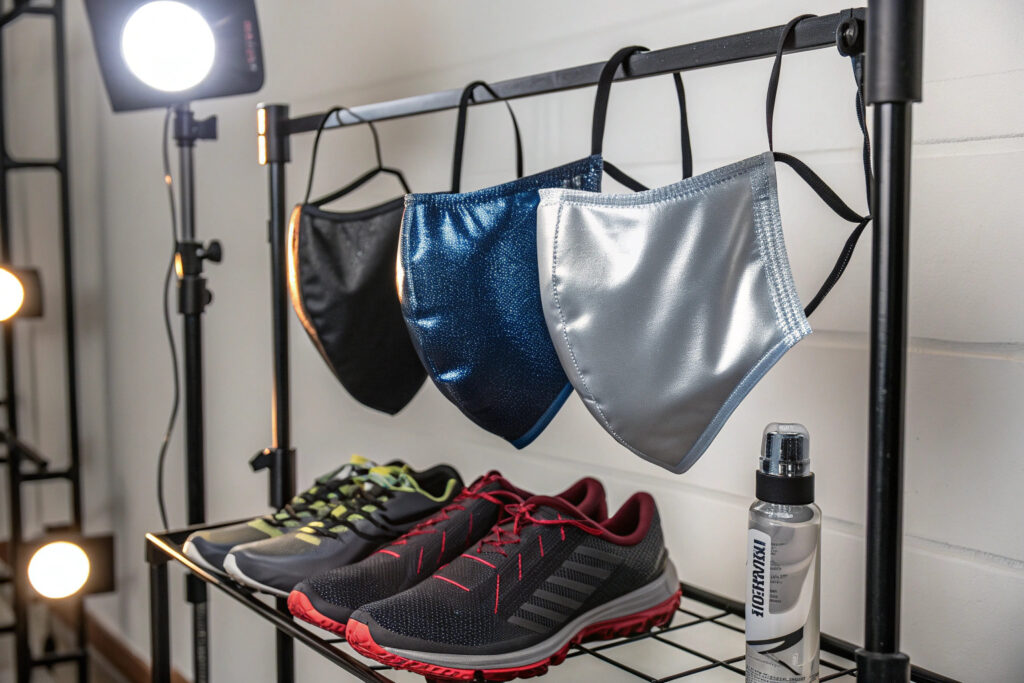
Does Polyester Breathe Well Enough for Long Wear?
Polyester is less breathable than cotton, which can trap heat if not designed properly. However, with modern knitting technology and microfibers, polyester fabrics can achieve a comfortable airflow. ScienceDirect shows studies where polyester microfibers outperform traditional cotton in sweat management. For customers seeking performance wear, polyester masks provide a stylish and functional solution.
Is Polyester More Cost-Effective for Businesses?
From a cost perspective, polyester has clear advantages. It resists wrinkles, dries quickly, and can be produced in large volumes at stable quality. According to Fibre2Fashion, polyester production is less affected by global cotton price fluctuations. For wholesalers and online store owners, this stability reduces sourcing risks and makes polyester a safe choice for high-turnover products.
Are Blended Fabrics the Best of Both Worlds?
Blended fabrics, often a mix of cotton and polyester, aim to balance comfort and durability. This option is becoming increasingly popular with both retail and wholesale buyers.
Blended fabrics are often chosen because they combine cotton’s softness with polyester’s strength, giving suppliers more flexibility to meet diverse buyer needs.
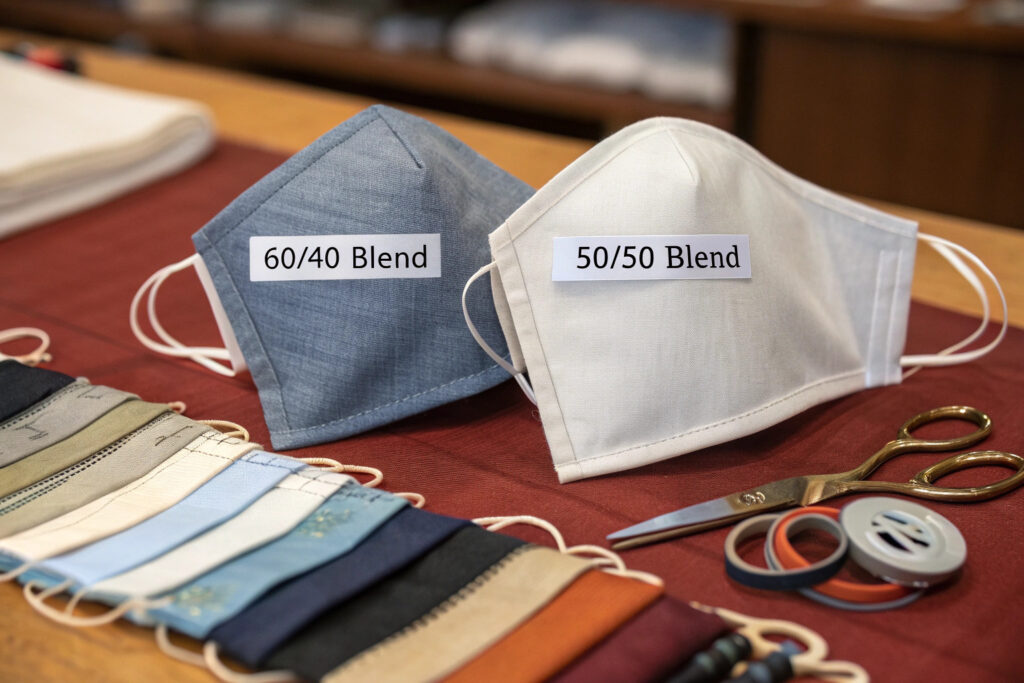
How Do Blends Improve Mask Performance?
By mixing natural cotton and synthetic polyester, blends achieve higher strength while maintaining comfort. For example, a 60/40 cotton-poly blend dries faster than pure cotton but still feels softer than polyester. According to Textiles Today, blends also resist shrinkage better. This makes them a strong option for fashion brands that need both durability and skin-friendliness in one product.
Do Blends Offer Better Value in Bulk Production?
For business buyers, blends often provide the best value. They cost less than premium cotton while performing better than standard polyester. Wholesalers and online sellers targeting diverse customers often prefer blends because they can satisfy different segments with one product line. Apparel Resources highlights that blended fabrics are increasingly used in sustainable collections as well, combining recycled polyester with organic cotton.
How to Decide Which Fabric Works for Your Market?
Every market has its own expectations. Children’s masks must be safe and soft, sports masks must be durable and quick-dry, and fashion masks must balance comfort with customization. The right choice depends on your end customer.
The best way to decide is to match fabric properties with your customer’s needs: cotton for comfort, polyester for durability, and blends for balance.
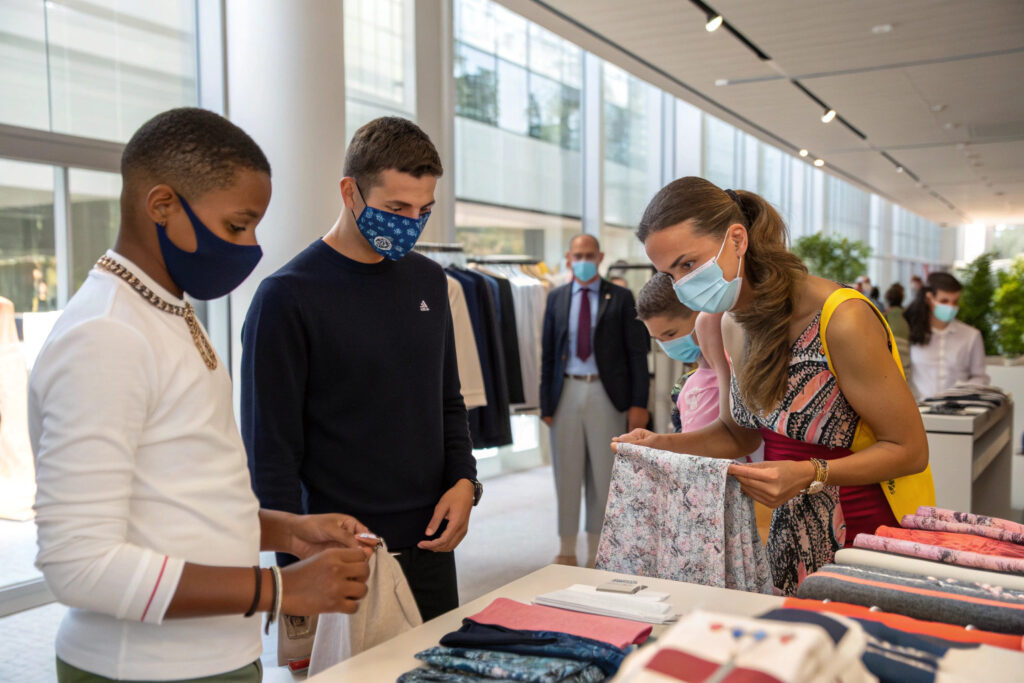
Should You Focus on Breathability or Durability?
When buyers target schools or family products, breathability matters more. Cotton or cotton-rich blends win here. When the focus is sports, outdoor, or fashion-forward designs, polyester becomes more attractive. For large wholesale orders, blended fabrics reduce risks because they serve multiple purposes without limiting customer base. Verywell Health explains that multiple layers also improve protection, regardless of fabric type.
Is Price the Final Deciding Factor?
Price is always important, especially for bulk orders. Polyester is usually the cheapest, cotton the most expensive, and blends sit in the middle. But considering long-term customer loyalty, buyers often prefer the fabric that offers the right balance of comfort and durability. Investopedia points out that cost efficiency does not only mean lower price but also reduced return rates and higher customer satisfaction.
Conclusion
Choosing between cotton, polyester, and blended fabrics is not a one-size-fits-all decision. Cotton wins in comfort, polyester in durability, and blends in balance. The right decision depends on your customers’ lifestyle, your product positioning, and your brand’s value promise. By knowing your market and aligning with the right supplier, you can reduce risks and increase sales success.
If you want to explore high-quality mask production with trusted partners, we at Shanghai Fumao are ready to help. Contact our Business Director Elaine at elaine@fumaoclothing.com to discuss your fabric mask orders and create products that your market will love.







